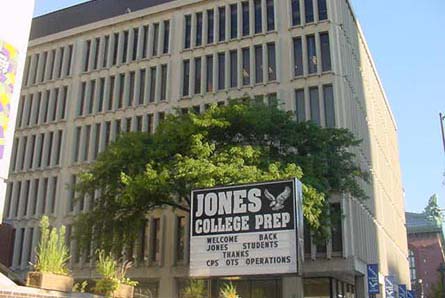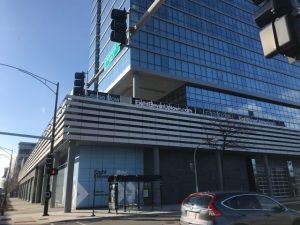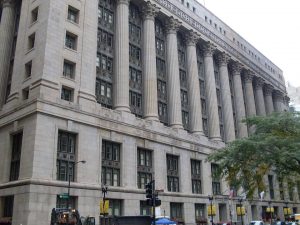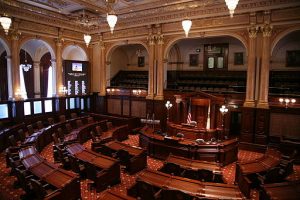Longtime South Loop resident John Jacoby said he will sacrifice anything for his two daughters’ education. And if that means moving out of the city he has grown to love, so be it.
Jacoby, who has lived downtown for 19 years, said he may leave once his youngest daughter, now 11, begins ninth grade. The lack of a South Loop neighborhood high school could push more families than Jacoby’s out of the city.
“Middle class families are leaving the area,” said Ald. Robert Fioretti (42nd). “CPS has failed to give them an adequate school.”
Fioretti, who spoke at the Board of Education meeting on Aug. 20, asked CPS officials to provide more access to good neighborhood schools for South Loop children.
There are 48 neighborhood high schools in the CPS system but none in the South Loop. The area—bounded by Michigan Avenue, Jackson Street, Roosevelt Street and the Chicago River—has seen a 300 percent increase in children ages 5 and under since 2010, according to census data obtained by reusejones.org, a neighborhood advocacy group.
The area’s growing number of children illustrates a greater need for a neighborhood high school, said group member Blagica Bottigliero.
CPS officials have told South Loop residents that neighborhood high schools like Wendell Phillips Academy or Wells Community Academy can house the area’s students, Jacoby said. But these schools are known for low academic performance and bad discipline, he said.
But there may be a chance to build South Loop’s own neighborhood school with the relocation of William Jones College Preparatory High School, 606 S. State St.
The selective admissions high school will be relocated to a facility next door, which is an eight-story, 1,200-student capacity building, Jacoby said. Some South Loop parents want to reuse Jones’ old structure, with a capacity for about 875 students, to house a neighborhood school
Jacoby, a lawyer and director of the Prairie District Neighborhood Alliance, has a 15-year-old daughter at Jones but said he understands that children need a good neighborhood high school to fall back on.
Jacoby said students typically need straight A’s throughout middle school to be considered for admission to the school. He added that students must score well on an exam administered by CPS for admission to selective schools.
For example, Jacoby said students must score at least 891 points out of 900 on the exam to gain admission to selective school Walter Payton Academy High School for next year. Similar high standards are also held for Jones, he said.
“For my sixth-grader, who is probably not going to test high, where do we send her?” Jacoby said.
He added that private school is an expensive option. Tuition over four years can cost between $18,000 to $20,000 a year, he said.
CPS will make the final decision to either demolish or reuse the Jones building.
Jamila Johnson, spokeswoman for CPS, said several options will be considered for the Jones building. She declined to comment on a decision deadline or the specific options being considered by CPS.
Enrique Perez, a member of reusejones.org and longtime resident of South Loop, said he thinks CPS wants to tear the building down. He added that CPS may have forgone Jones facade maintenance because officials wanted to justify building a new, modern structure.
Renovation costs at Jones are projected to be $18 million to $26 million, according to a CPS confidential memo shared with some community members in the last year.
It will cost $10 million in South Loop TIF funds to demolish the building, said both Jacoby and Perez. Jacoby said it’s worth spending the extra money to reuse the building if it keeps families in the area and promotes good education.
At least one business isn’t sure if adding more high school students to the area would be good.
“Nine hundred more students would be overwhelming, considering the area already has so many college students,” said Johnathon Rodatz, manager at Epic Burger, a restaurant across the street from Jones. “Sometimes we get a group of 15 or 20, where kids are just there to hang out, and there are not a lot of orders. That just takes up a lot of space.”
CPS has a greater responsibility at hand, said Ann Marie Ryan, associate professor of education at Loyola University. She said CPS should focus on sub-standard neighborhood high schools.
“We have existing neighborhood schools that need the board to invest in them, whether or not that will solve the problem of South Loop,” Ryan said. “How, as a system, can CPS serve all kids well?”













Be First to Comment